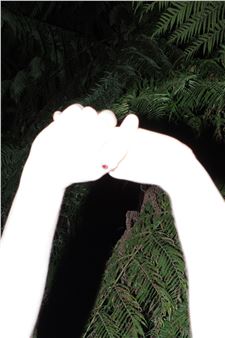Masterworks from the Hirshhorn Collection
Joseph Hirshhorn (American, b. Mitau, Latvia, 1899вҖ“1981), whose 1966 gift to the nation of nearly six thousand works led to the creation of the Hirshhorn Museum and Sculpture Garden, was a passionate and knowledgeable collector. He amassed art by some of the greatest figures of modernism, such as Auguste Rodin and Willem de Kooning, and took risks by supporting emerging artists. Since its opening in 1974, the Hirshhorn has carried on its founderвҖҷs legacy through an active and ambitious program of acquisitions. Its highly regarded collection charts the development of modern and contemporary art from the late nineteenth century to the present, across the world, and across media.
вҖңMasterworks from the Hirshhorn Collection,вҖқ a new rehanging of the third-level permanent collection galleries, features highlights of Joseph HirshhornвҖҷs original gift alongside some of the newest additions to the collection. Featuring more than 75 works in virtually all media, the exhibition includes several major artworks returning to view after more than a decade, such as Jean-Paul RiopelleвҖҷs 1964 Large Triptych, as well as in-depth installations devoted to some of the most important artists in the collection. More than a dozen paintings and works on paper by Willem de Kooning are exhibited alongside sculptures by Alberto Giacometti, creating a riveting conversation between two of the 20th centuryвҖҷs greatest figurative artists. Other cornerstones of the collection on view are Constantin BrancusiвҖҷs Sleeping Muse I (1909вҖ“10), Edward HopperвҖҷs Eleven A.M. (1926), Ed RuschaвҖҷs The Los Angeles County Museum on Fire (1965вҖ“68), Louise BourgeoisвҖҷ Legs (1986/cast 2008) and Ron MueckвҖҷs Untitled (Big Man) (2000).
New cultural histories will be represented by some of the most recent additions to the HirshhornвҖҷs collection. Brazil-based Mexican artist HГ©ctor ZamoraвҖҷs O Abuso da HistГіria [The Abuse of History] (2014) is video of a a riotously destructive group performance at SГЈo PauloвҖҷs historic Hospital Matarazzo. In the Lerner Room overlooking the National Mall,, Cuban artist Reynier Leyva NovoвҖҷs 5 Nights (2014) maps revolutionary 20th-century manifestos by Lenin, Hitler, Castro, Mao, and Gadhafi to conceptual monochromes based on the amount of ink spilled in the writing of each text. In an adjacent room is a massive sculptural installation by Argentinian artist Eduardo Basualdo, The End of Ending (2012), which occupies all but a sliver of walkable space in a gallery. Also appearing at the museum for the first time is the performative sculpture R.S.V.P. X (1976/2014) by Senga Nengudi, who was among a group of artists in 1970вҖҷs Los Angeles who explored conceptual art in their pursuit of a distinctly African-American aesthetic.
The exhibition is augmented by a special loan of Peter DoigвҖҷs painting Spearfishing (2013), which hangs alongside richly colored canvases by Francis Bacon, Richard Diebenkorn and Wifredo Lam.

Recommended for you
Joseph Hirshhorn (American, b. Mitau, Latvia, 1899вҖ“1981), whose 1966 gift to the nation of nearly six thousand works led to the creation of the Hirshhorn Museum and Sculpture Garden, was a passionate and knowledgeable collector. He amassed art by some of the greatest figures of modernism, such as Auguste Rodin and Willem de Kooning, and took risks by supporting emerging artists. Since its opening in 1974, the Hirshhorn has carried on its founderвҖҷs legacy through an active and ambitious program of acquisitions. Its highly regarded collection charts the development of modern and contemporary art from the late nineteenth century to the present, across the world, and across media.
вҖңMasterworks from the Hirshhorn Collection,вҖқ a new rehanging of the third-level permanent collection galleries, features highlights of Joseph HirshhornвҖҷs original gift alongside some of the newest additions to the collection. Featuring more than 75 works in virtually all media, the exhibition includes several major artworks returning to view after more than a decade, such as Jean-Paul RiopelleвҖҷs 1964 Large Triptych, as well as in-depth installations devoted to some of the most important artists in the collection. More than a dozen paintings and works on paper by Willem de Kooning are exhibited alongside sculptures by Alberto Giacometti, creating a riveting conversation between two of the 20th centuryвҖҷs greatest figurative artists. Other cornerstones of the collection on view are Constantin BrancusiвҖҷs Sleeping Muse I (1909вҖ“10), Edward HopperвҖҷs Eleven A.M. (1926), Ed RuschaвҖҷs The Los Angeles County Museum on Fire (1965вҖ“68), Louise BourgeoisвҖҷ Legs (1986/cast 2008) and Ron MueckвҖҷs Untitled (Big Man) (2000).
New cultural histories will be represented by some of the most recent additions to the HirshhornвҖҷs collection. Brazil-based Mexican artist HГ©ctor ZamoraвҖҷs O Abuso da HistГіria [The Abuse of History] (2014) is video of a a riotously destructive group performance at SГЈo PauloвҖҷs historic Hospital Matarazzo. In the Lerner Room overlooking the National Mall,, Cuban artist Reynier Leyva NovoвҖҷs 5 Nights (2014) maps revolutionary 20th-century manifestos by Lenin, Hitler, Castro, Mao, and Gadhafi to conceptual monochromes based on the amount of ink spilled in the writing of each text. In an adjacent room is a massive sculptural installation by Argentinian artist Eduardo Basualdo, The End of Ending (2012), which occupies all but a sliver of walkable space in a gallery. Also appearing at the museum for the first time is the performative sculpture R.S.V.P. X (1976/2014) by Senga Nengudi, who was among a group of artists in 1970вҖҷs Los Angeles who explored conceptual art in their pursuit of a distinctly African-American aesthetic.
The exhibition is augmented by a special loan of Peter DoigвҖҷs painting Spearfishing (2013), which hangs alongside richly colored canvases by Francis Bacon, Richard Diebenkorn and Wifredo Lam.
Contact details















